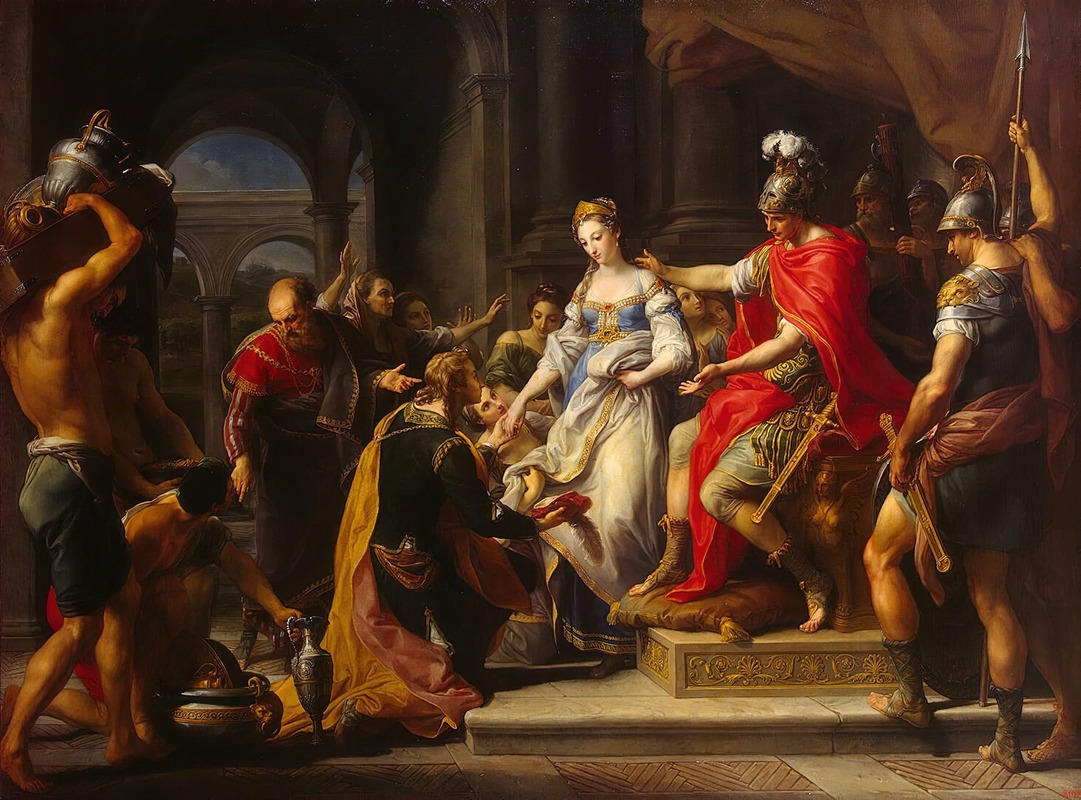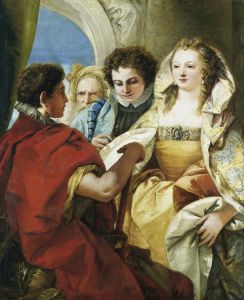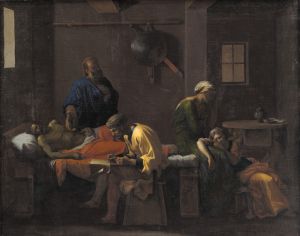
Continence Of Scipio
A hand-painted replica of Pompeo Batoni’s masterpiece Continence Of Scipio, meticulously crafted by professional artists to capture the true essence of the original. Each piece is created with museum-quality canvas and rare mineral pigments, carefully painted by experienced artists with delicate brushstrokes and rich, layered colors to perfectly recreate the texture of the original artwork. Unlike machine-printed reproductions, this hand-painted version brings the painting to life, infused with the artist’s emotions and skill in every stroke. Whether for personal collection or home decoration, it instantly elevates the artistic atmosphere of any space.
Continence of Scipio is a painting by the Italian artist Pompeo Batoni, completed in 1771. Batoni, a prominent painter of the 18th century, was known for his skill in combining elements of classical antiquity with the refined style of the Rococo and early Neoclassicism. This work is one of several paintings by Batoni that depict historical and mythological themes, reflecting his interest in classical literature and moral virtues.
The painting illustrates a scene from the life of the Roman general Scipio Africanus, as recounted by the ancient historian Livy and other classical sources. The story takes place during the Second Punic War (218–201 BCE), after Scipio's victory over the Carthaginians in Spain. According to the tale, a beautiful young woman was captured and brought to Scipio as part of the spoils of war. Upon learning that she was betrothed to a local prince named Allucius, Scipio chose to return her to her fiancé, along with the ransom her family had offered. This act of generosity and self-restraint, often referred to as "continence," exemplified Scipio's moral virtue and magnanimity.
In Batoni's depiction, the scene is rendered with dramatic clarity and emotional depth. Scipio is shown seated at the center of the composition, dressed in Roman military attire, exuding authority and composure. The young woman, modestly dressed and visibly emotional, stands before him, accompanied by her family and fiancé. The figures are arranged in a balanced and harmonious composition, characteristic of Batoni's style. The artist's attention to detail is evident in the intricate rendering of fabrics, armor, and facial expressions, which convey the gravity and nobility of the moment.
Batoni's use of color and light enhances the narrative, with warm tones and soft lighting drawing attention to the central figures. The painting reflects the influence of both the Baroque tradition, with its dramatic contrasts and dynamic poses, and the emerging Neoclassical movement, which emphasized clarity, order, and moral themes inspired by antiquity.
The Continence of Scipio was commissioned by a British patron, reflecting Batoni's popularity among European aristocrats and collectors during his career. The painting is now housed in the Museum of Fine Arts in Houston, Texas, where it remains an important example of Batoni's work and 18th-century history painting.


















